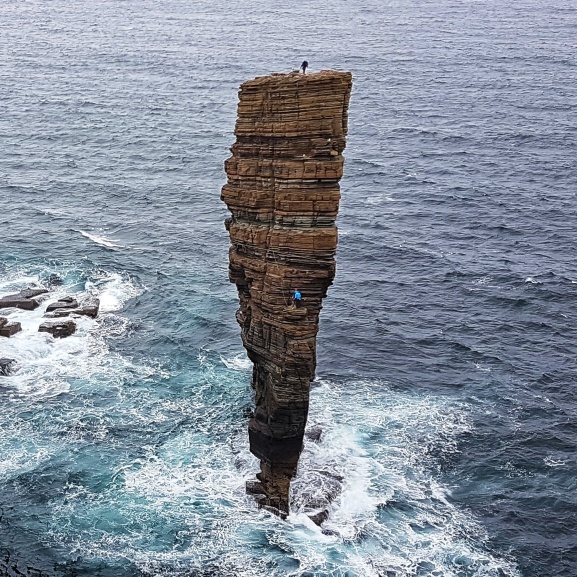This is a unique course teaching the techniques used by a very small group of climbers in the activity known as Adventure Climbing. Adventure climbing is the sport of seeking out unclimbed rock in unusual, remote and difficult to access locations.
The techniques taught during this course have been developed and practised by myself over many years and have allowed me to safely access and climb new routes in many diverse and outstandingly beautiful locations.
During your stay in Donegal, we will visit several very adventurous locations, where we will employ a suitable mixture of guiding and instructional techniques to ensure your safety, enjoyment and continued recreational development.

The locations we will visit will require a mixture of standard Mountain Leader Training Board (MLTB) code of best practice techniques, coastaleering techniques developed by myself over many years and more advanced skills required to visit places that no-one has ever set foot before.
The instructional element of the course will be primarily based on your current skills level and best practice techniques in the multi-pitch situation will be taught and your personal techniques “tweaked” as appropriate. (As per Mountain Instructor Award (M.I.A.) syllabus)
This a small selection of techniques employed in a standard adventure climbing day. Dependant on your current skills and aspirations I will instruct and demonstrate the above and much, much more. The Adventure climbing skills employed are only used by a very small group of climbers and as such are rarely taught (if ever) or seen in use.
Click on the links below for an example of where these techniques have been used and read more about the outstanding locations they can safely take you.
Reading the sea. This involves understanding the tidal conflictions found around semi-submerged objects and how these conflictions interact with the Ebb and Flood tides to produce kinetic energy transfers within the sea.
Understanding the sea. This utilises the above component to allow the coastaleer to travel safely in very atmospheric sea states.
Slackline Tyrolean. This utilises a method of creating continuity with the mainland using 6mm polypro.
Single paddle Technique.
Free surface effect.
Geometric Centre of gravity in the nautical application.
The Adventure climbing skills employed are only used by a very small group of climbers and as such are rarely taught (if ever) or seen in use.
Placing Abseil stakes. Why, where, how, and methods employed to ensure maximum strength and security of the placement.
Placing Pegs. Why, where, how, and methods employed to ensure maximum strength and security of the placement.
Exploratory climbing techniques:- Techniques for ascending unclimbed ground where pre-inspection is impossible.
Getting home. Selecting and building abseil stations where no-one has ever been before. What to use, what to leave and how to do.
This a small selection of techniques employed in a standard adventure climbing day. Dependant on your current skills and aspirations I will instruct and demonstrate the above and much, much more.